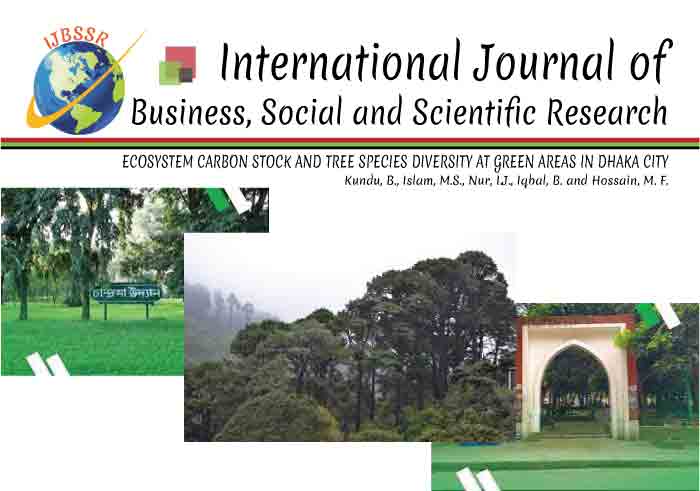ECOSYSTEM CARBON STOCK AND TREE SPECIES DIVERSITY AT GREEN AREAS IN DHAKA CITY

Urban forest has a key role in mitigating the consequence of global
climate change. Along with natural forest, urban park has also a significant
contribution to carbon sequestration which yet not studied completely. This study was conducted to estimate above
and below ground carbon stock, tree species diversity and soil organic carbon
at Chandrima Uddan and Ramna Park in Dhaka city. A total 46 plots were sampled
to determine diameter at breast height of trees, tree height and tree species
diversity. Using allometric equations and assuming C as 50% of biomass, the
mean above and below ground biomass carbon stock was found 122.19 Mg ha-1
in Chandrima Uddan and 247.91 Mg ha-1 in Ramna Park. In total 506
trees were sampled and 48 different tree species were identified and recorded.
The Shannon Wiener Index was used to evaluate the tree diversity per plot. It
ranged from 0 to 1.71 with a mean value of 0.87 in Ramna Park and 0to 1.33 with
a mean value of 0.58 in Chandrima Uddan. For the estimation of soil organic carbon
(SOC), soil samples were collected from two depths (5-10cm and 20-25cm) at two
different sampling sites of sampled plot. The mean value of SOC was found 28.82
Mg ha-1 in Chandrima Uddan and 25.52 Mg ha-1 in Ramna
Park. Among different relationships, the relationships between basal area and
tree carbon stock showed significant (P<0.05) and strongly positive
correlation in both parks. Therefore, the results of the study confirmed that
the selected parks can serve as a valuable ecological tool in terms of carbon
sequestration, diverse tree species and storage of soil organic carbon which
have a key role in reducing greenhouse gases and contributing to climate change
mitigation.

